Child Assessment Cycle: Stages
While there are a variety of child assessment tools, it is possible to identify the key elements. The model that is discussed by McAfee, Leong, and Bodrova (2016) focuses on the purpose, content, time, documentation, information interpretation, and its further use. The following four steps can be identified: observation and information gathering, analysis, evaluation, and communication. These major decisions of the assessment cycle should be applied by qualified teachers to practice their professional judgement. It is important to adjust the given model in accordance with a school’s and state’s requirements.

Purpose and Benefits: Students
- Providing pertinent learning programs and adjusting the environment;
- Matching experiences and learning milestones;
- To monitor their developmental successes and failures.
The assessment of students is of great importance to monitor their developmental successes and failures and implement the necessary changes. A deep understanding of toddler and infant development allows for providing pertinent learning programs and adjusting the environment. The match of experiences and learning milestones that can be achieved through assessment increases the likelihood of significant progress.
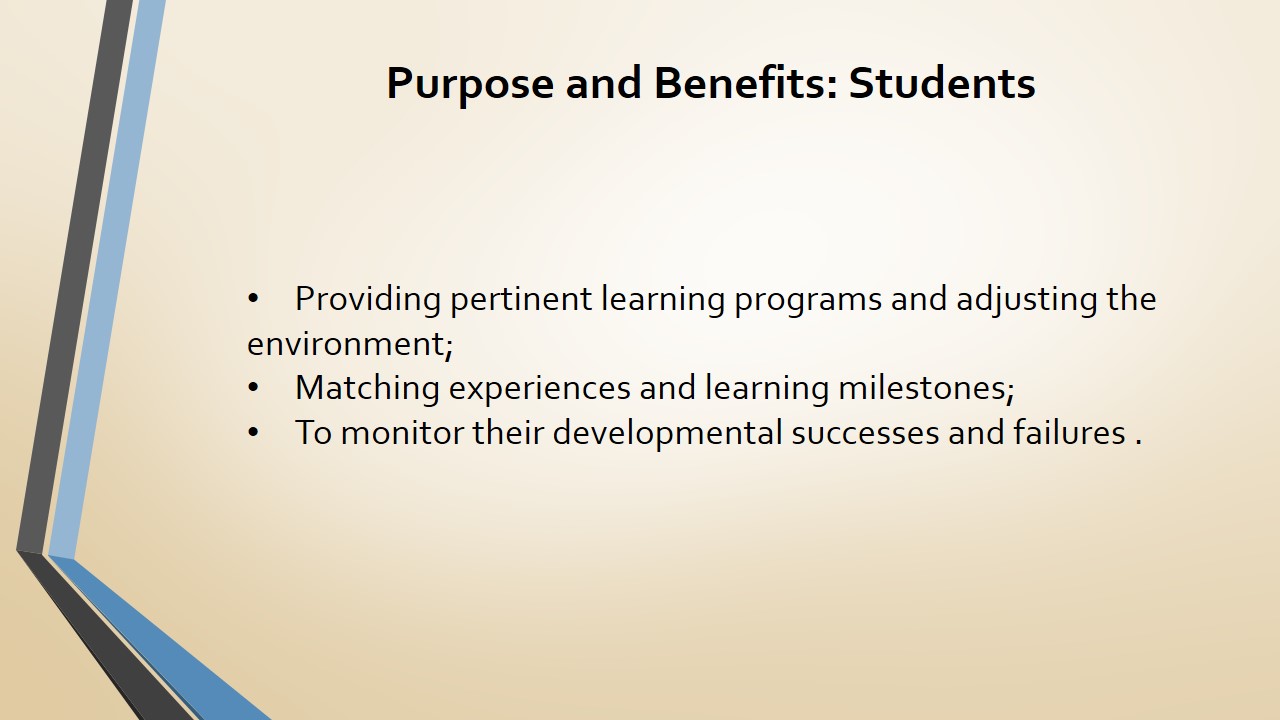
Purpose and Benefits: Parents
- An authentic form of evaluation;
- No need to set a specific task ;
- The creation of active family-teacher interactions.
For parents, observation can be noted as an authentic form of evaluation that allows monitoring and assessing children in the natural environment they engage in. For example, when a child grasps and pulls pop beads, there is no need to set a specific task since it is only needed to observe to document information and identify any deficiencies (Bell, 2017). Another benefit is creating active family-teacher interactions to support learning continuity. The family’s input into the mechanism of evaluation cannot be underestimated since it provides access to valuable information, shaping the opportunities for further improvement.
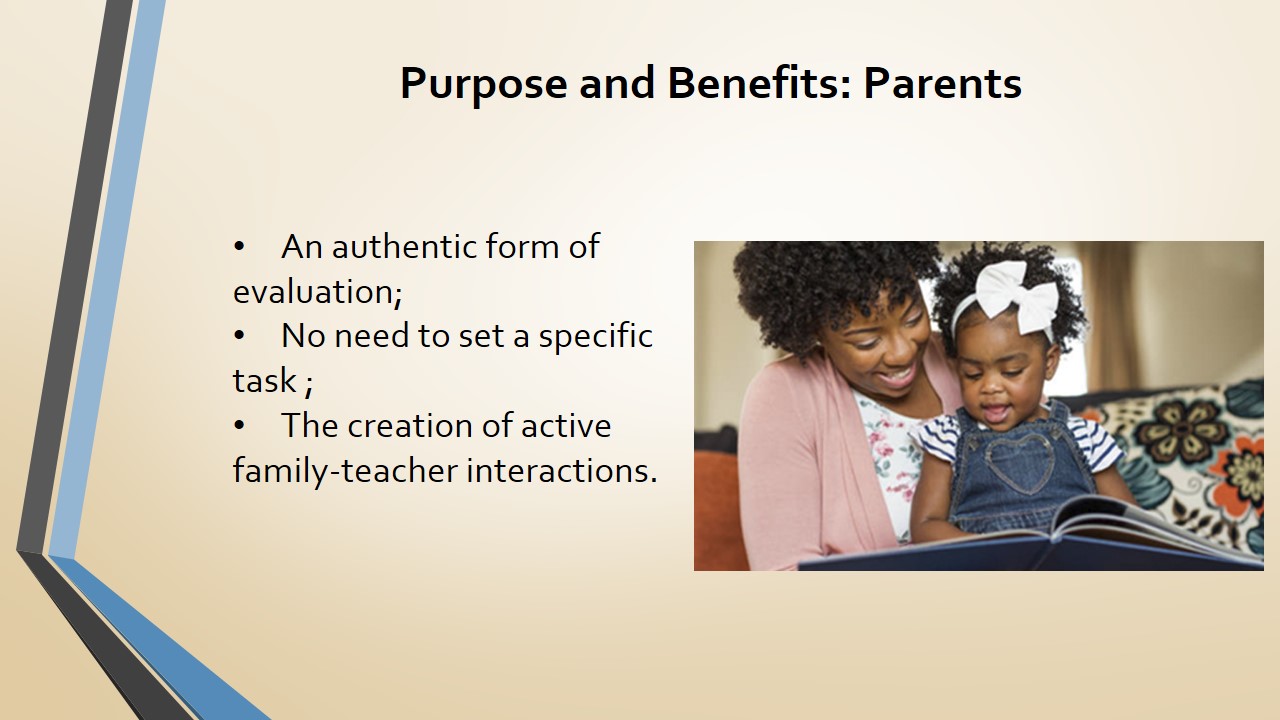
Purpose and Benefits: Teachers and Schools
- Identifying children’s special needs, supporting the learning process and responding to school accountability requirements;
- Ongoing evaluation of students ensures that all the children would make progress and receive assistance from teachers (Caspe, Seltzer, Kennedy, Cappio, & DeLorenzo, 2013).
Being integrating into the learning process, such activities can help in encouraging discovery and exploration in children. The teachers are expected to establish strong links with the families to connect teaching practices and home environment (Caspe, Seltzer, Kennedy, Cappio, & DeLorenzo, 2013). For example, journal reflections that are to be completed by parents can offer valuable insights that may remain unnoticed during school-based checks. Constant assessments allows for evaluating the quality of learning programs and approaches, which can be used to inform policy and make the required changes. For example, if the majority of students show low learning outcomes in literacy, it can be a signal to employ additional teachers or reconsider training instructions.
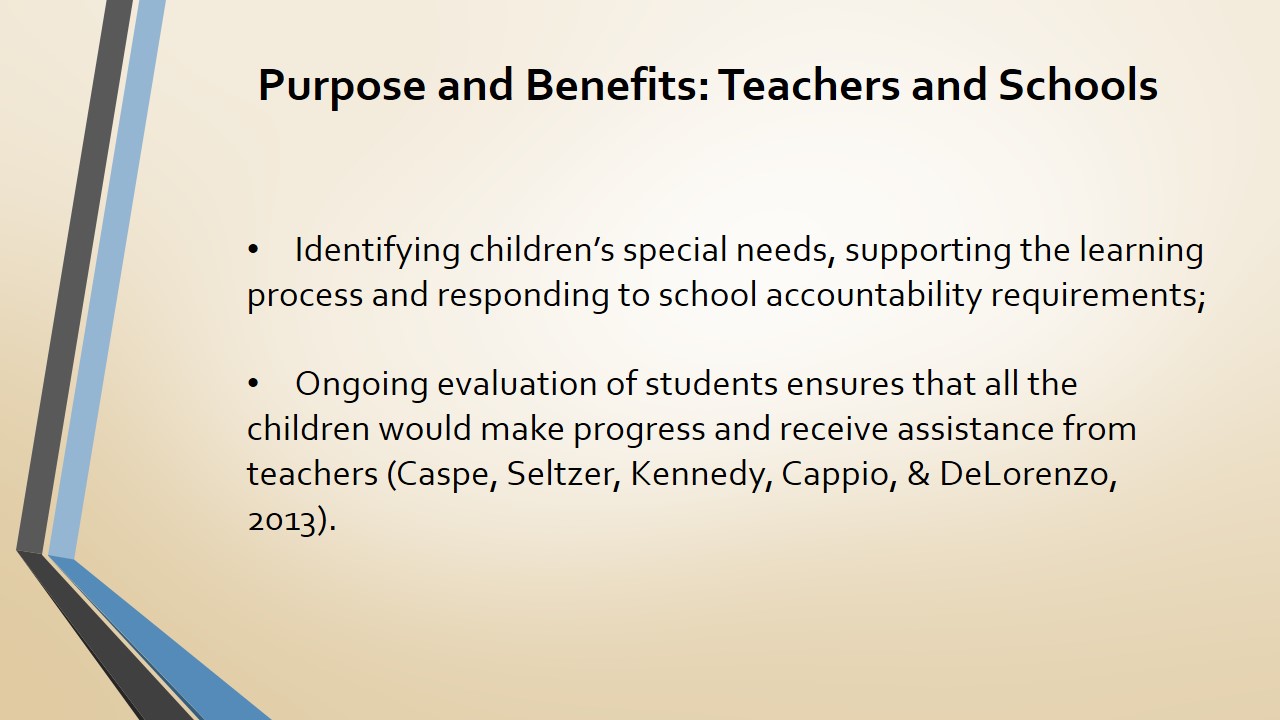
Pre-Assessment
Teachers should “familiarize themselves with the goals and objectives for their infants and toddlers” (Bell, 2017, p. 6).
The reading and revision of children’s developmental milestones and review of their recent progress should also be taken into account. Pre-assessment is performed before students start a new learning unit or program to determine their level and the ability to meet learning objectives that are relevant to a certain stage of development. This practice provides firm data against which students’ progress can be measured after the unit or program completion. In the learning environment, cognitive and social skills are especially important to monitor to detect developmental challenges and correct them properly. Preliminary questionnaire can be noted as one of the most common ways to provide pre-assessment both at school and home settings.
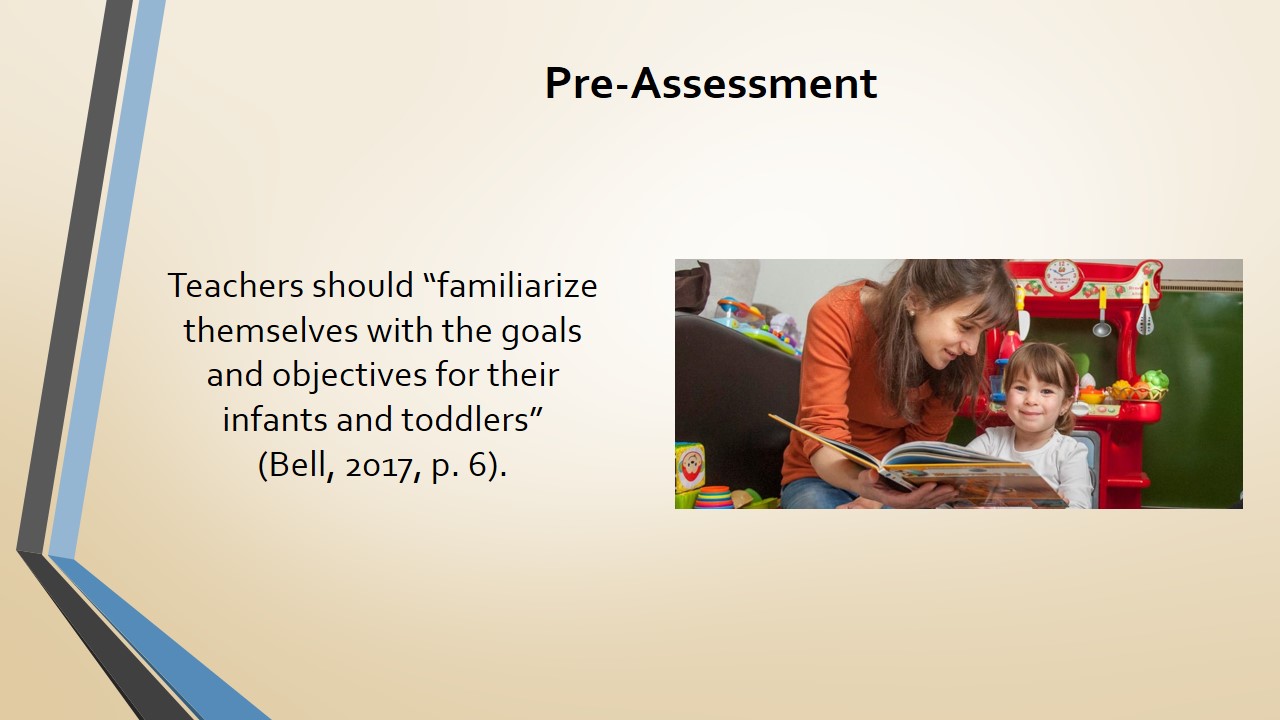
Post-Assessment
- Looking for trends and progress made by a student, setting the direction for choosing further learning goals and strategies;
- Writing prompts, group discussions , individual checks, and so on.
Post-assessment is useful to look for trends and progress made by a student, setting the direction for choosing further learning goals and strategies. Writing prompts, group discussions or individual checks can be used as post-evaluation methods. It is also possible to discuss a student’s progress with his or her parents to identify those children who need more attention or an individualized approach to succeed. For example, parents’ writing prompts can be reviewed by a teacher with regard to his or her observations.
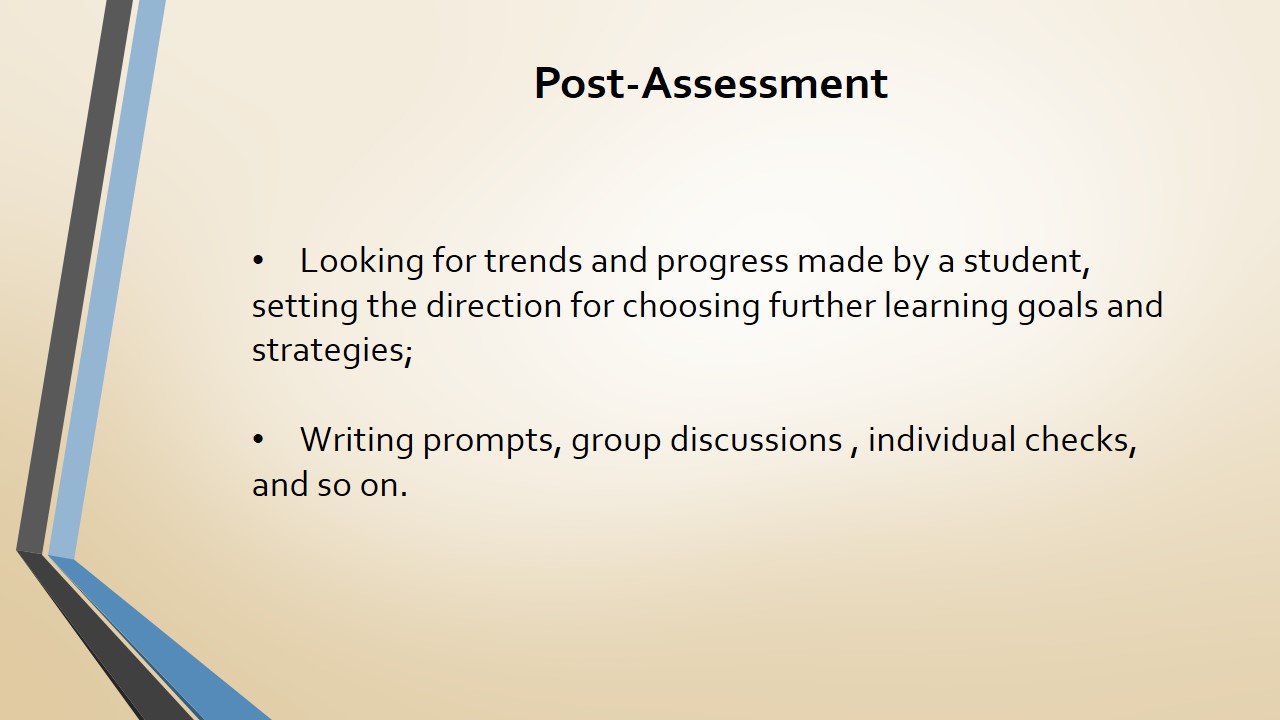
Intended Purpose and Data Collection
- Each of the learning units and programs has developmental milestones that can be used as the foundation for determining this purpose.
- They can be identified as the following dimensions:
- abilities,
- knowledge,
- attitudes.
To collect informative data, it is critical to have an intended purpose before conducting the assessment and collecting data on a student. In this context, an intended purpose serves as a guide for a teacher’s planning to provide individualized care and improve on a child’s strengths. For example, if parents noticed that their child does not actively plays with other children and prefers not speaking when something is needed, they may discuss it with the teacher. Accordingly, for this case, the intended purpose will be to understand the given child’s behaviors and reveal any gaps in his or her development. At the same time, data collection becomes comprehensive since both home and school settings are used to evaluate a student.
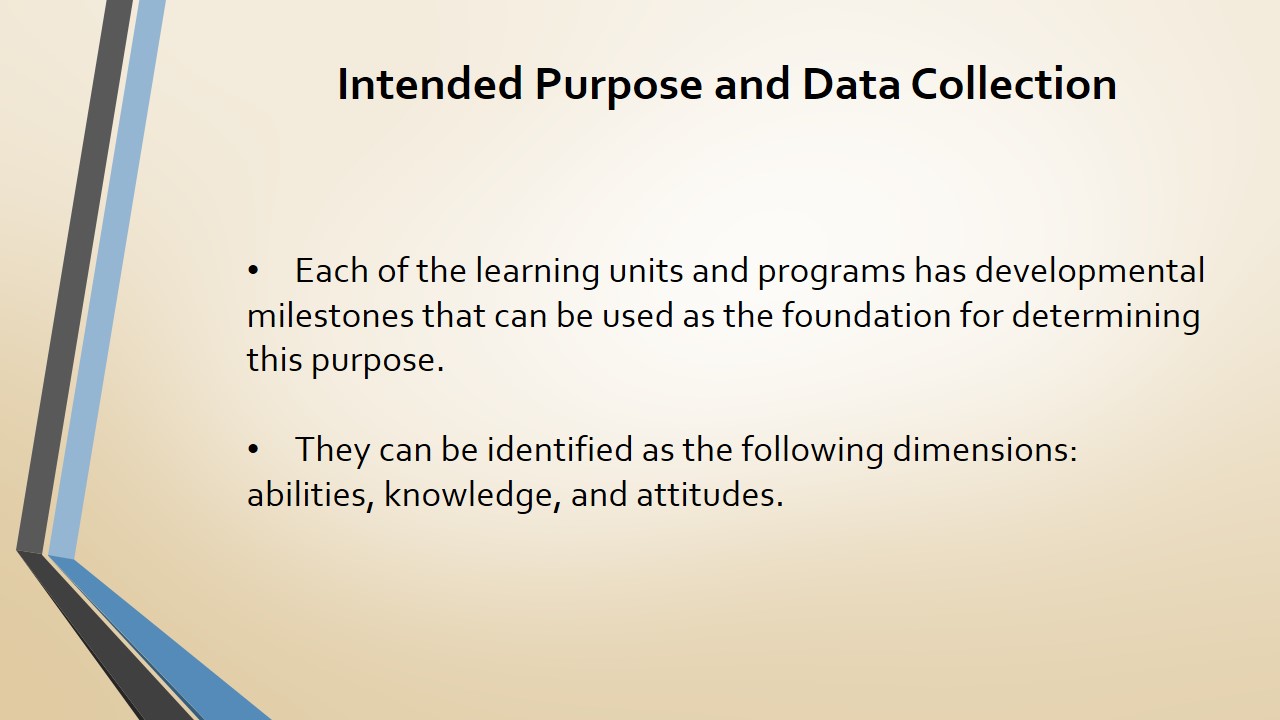
Example Activity and Teacher Responsibilities
Collaborating with parents:
- Intended purpose identification.
- Pre-assessment in school settings.
- Engaging parents in the evaluation process.
- Ensure that the family understands and acts.
- Manage evaluation in home settings.
- Document and integrate data.
- Interpret collected information and make change.
- It is the responsibility of a teacher to find the correct words;
- Family-teacher conferences;
- The use of the evaluation results.
Graphic with activity and teacher responsibilities. The collaborative assessment if a child with a low level of group interaction can be taken as an example of an effective method to clarify his or her behaviors and developmental progress. First of all, an intended purpose should be formulated, paying attention to the background of the family and the chosen student to determine any cultural, social, and learning issues. The second step is to conduct pre-assessment in the school and home environment to observe the child in both natural and learning settings. The next step is to engage parents in the process of evaluation by clearly communicating the goals and procedures. It is essential to speak the same language with teachers, avoiding jargon, inappropriate words, and behaviors that may indicate mistrust or stereotypes (Knestrick, 2013). For some families, it can be easier to view charts and other formats of visual information to understand what exactly they are expected to do. While providing the assistance with home setting checks, the teacher can encourage the family to ask any related questions and offer extensive explanations. The documentation should be completed by the teacher, with the integration of both sources of data. Ultimately, the consideration of the results should be related to the learning milestones and intended purpose; the findings should be discussed with the family and school, if necessary.
Example Activity and Teacher Responsibilities. The assessment cycle that is discussed earlier requires engaging parents in the process of evaluation, which can be a difficult task. Some parents are resistant to the interaction with the school, while other may not be interested in it to spend their time. It is the responsibility of the teacher to find the correct words and determine proper actions to ensure that they will cooperate. Caspe et al. (2013) state that various opportunities are to be created for the interaction between teachers and families. For example, family-teacher conferences are listed as one of the most feasible and effective ways to organize this conversation. The use of the evaluation results is another to connect home and school practices, which facilitates the participation of parents in shaping learning and assessment practices.
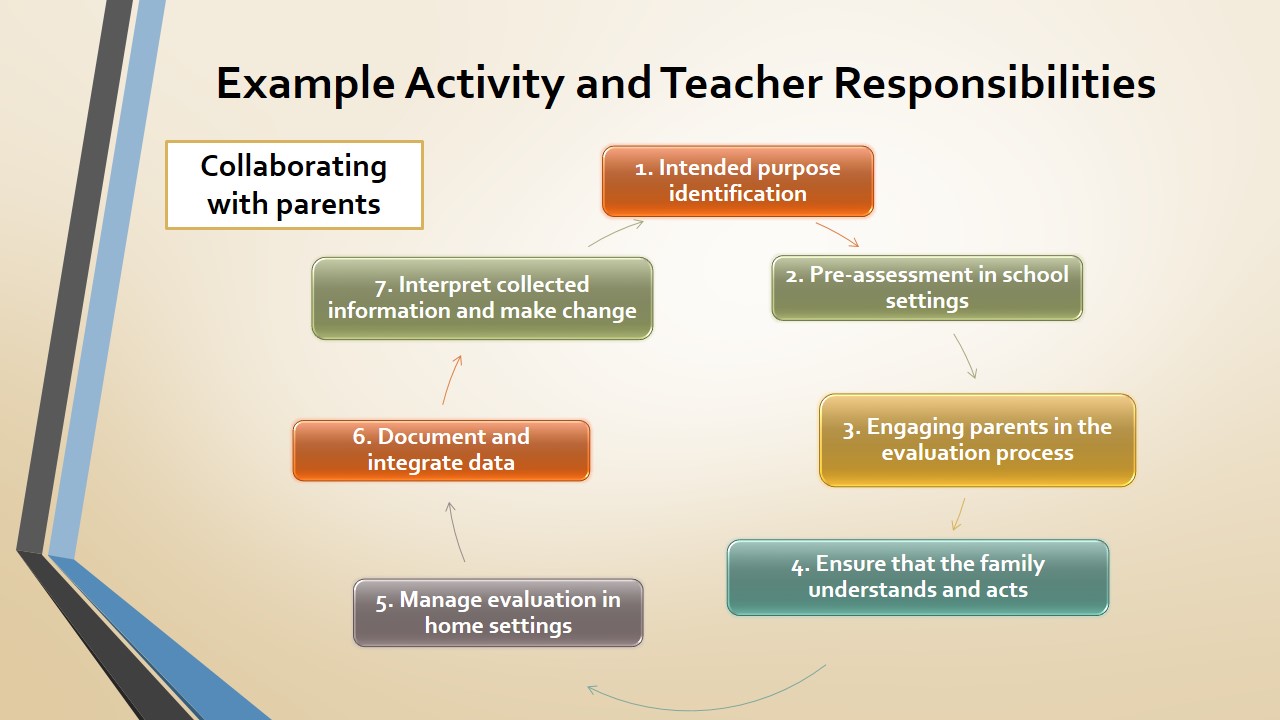
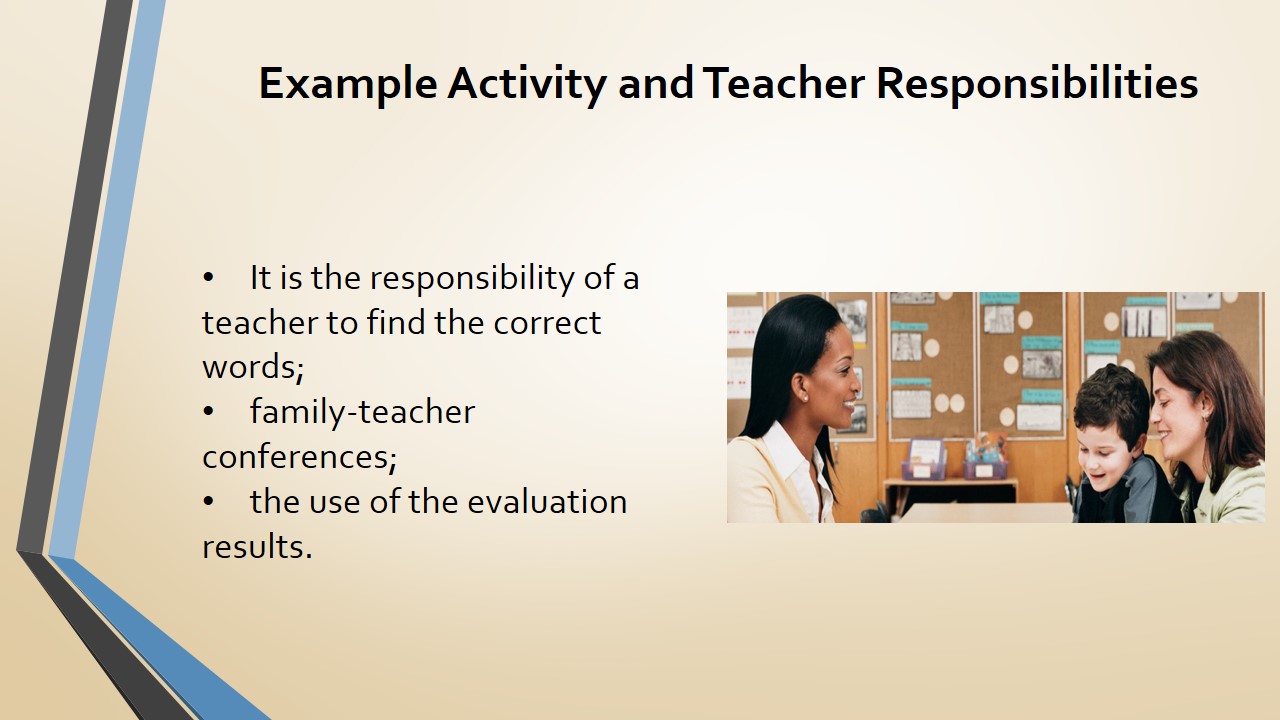
Resources to Learn More
- Mychild.com by the National Association for the Education of Young Children (NAEYC);
- Teaching strategies.com;
- ParentPal.
To utilize data from the mentioned resources, teachers should determine their goals and objectives with regard to the needs of their students. Accordingly, one or several resources can be chosen (“Early childhood assessment”, 2014).
Mychild.com is a website by the National Association for the Education of Young Children (NAEYC) and designed to assist professionals with their responsibilities. Among the functionality features of this resource, there are tracking assessments, managing the calendar, using the online library, and sending reminders of various types. In addition, there are free apps for observation and child portfolios. Teaching strategies.com website is another relevant resource that can be used by professionals to access webinars, classroom organization strategies, and the ways to individualize children checks. For parents, there is an application called ParentPal that offers guidance and tracking for conducting insightful observations of their children.

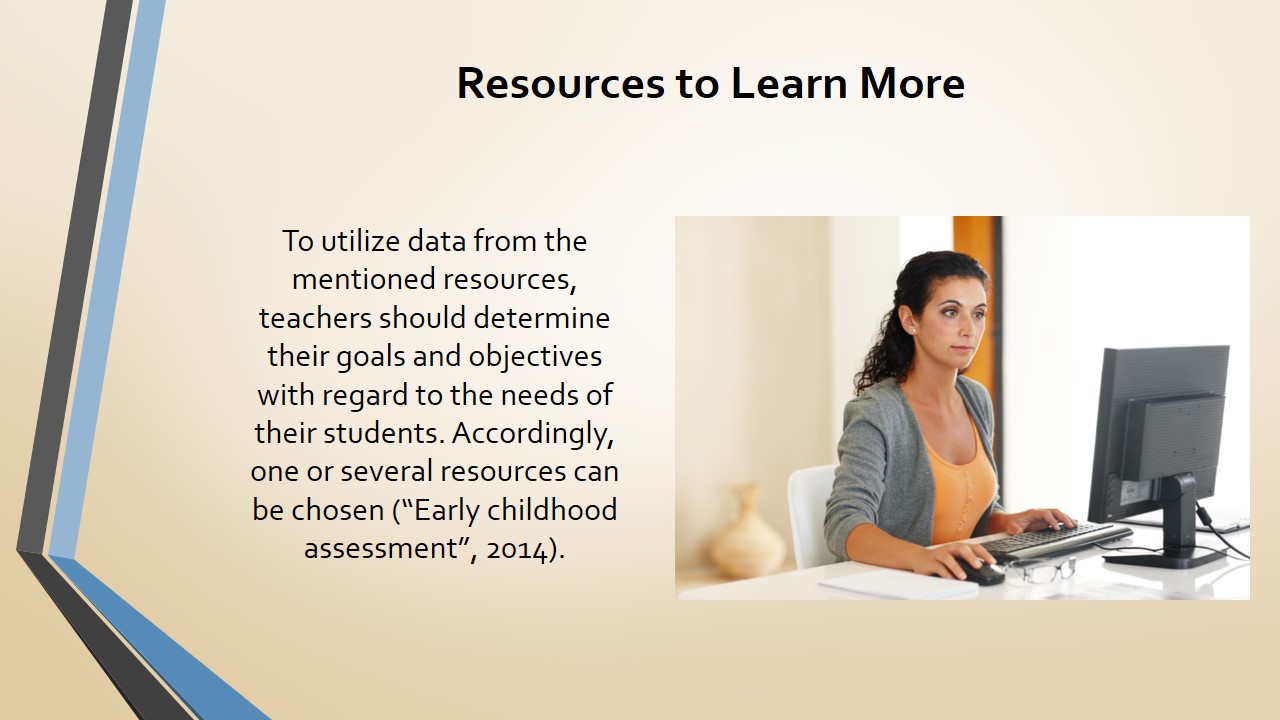
Conclusion
- The child assessment cycle includes the key elements of the intended purpose, pre- and post-assessments, family cooperation, documentation, and data interpretation.
- The child assessments should be cyclic, authentic, diverse, and informed, thus aligning with developmental milestones and instructional goals.
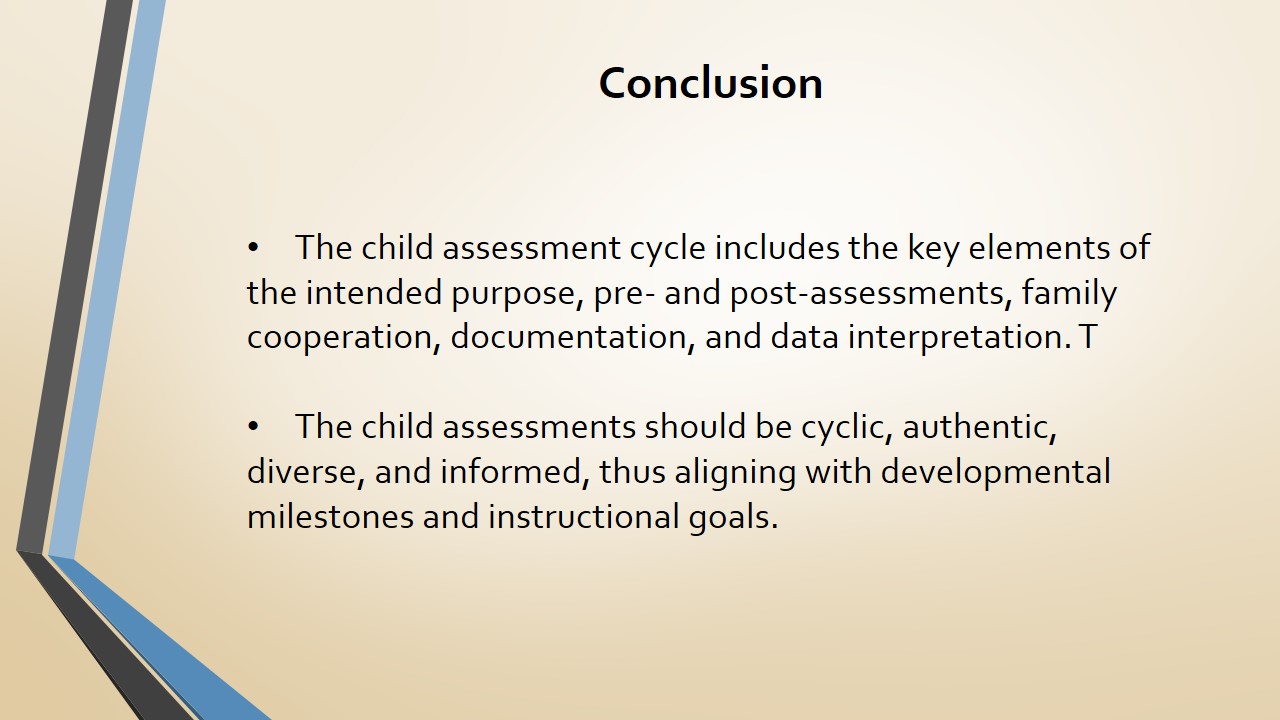
References
Bell, D. D. (2017). Watching the babies: The why, what, and how of observation as assessment in infant and toddler care. Dimensions of Early Childhood, 45(1), 4-10.
Caspe, M., Seltzer, A., Kennedy, J. L., Cappio, M., & DeLorenzo, C. (2013). Engaging families in the child assessment process. Young Children, 68(3), 8-14.
Early childhood assessment. (2014). Web.
Knestrick, J. (2013). Early childhood assessment: 9 keys to effective practice. Web.
McAfee, O. D., Leong, D. J., & Bodrova, E. (2016). Assessing and guiding young children’s development and learning (6th ed.). Upper Saddle River, NJ: Pearson.